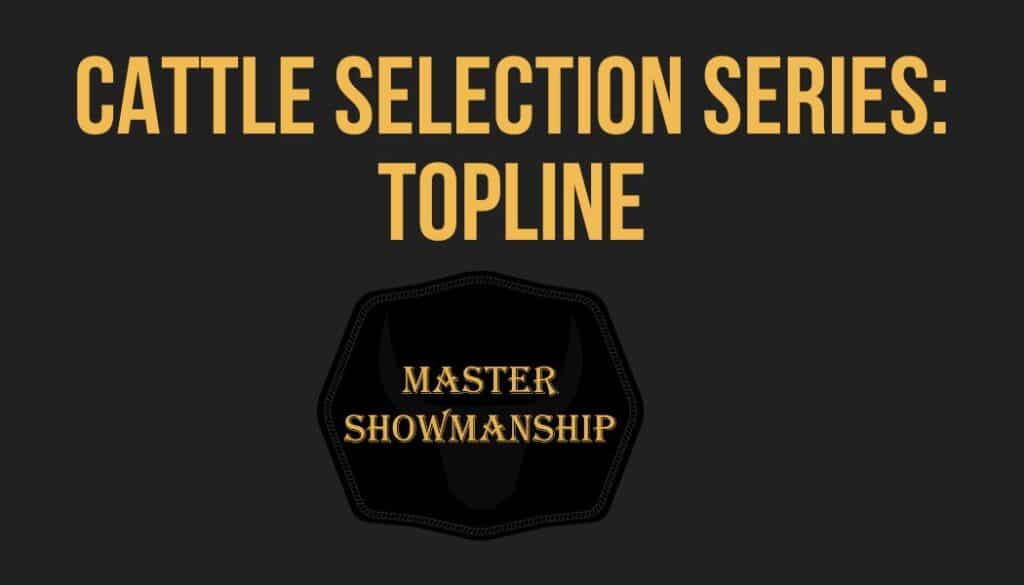
When evaluating a show calf, one of the most important features to consider is the topline. This is the easiest part of the animal to assess, and it’s something every cattle exhibitor should learn to recognize early on. But how exactly do you evaluate the topline? Let’s break it down.
The topline refers to the imaginary line running from the point of the shoulder to the hip of the steer. This line is critical because it gives you a clear picture of the animal’s overall structure and balance. The topline is a visual cue to how easily an animal can be to show, so it is critical that you know how to recognize a good level back.
To evaluate the topline properly, you need to observe the animal from the side—preferably while it’s set up with its head held high and level. A key mistake that many people make is standing too close to the animal. If you’re right next to the steer, you won’t get a good perspective on the line running down his back. Instead, step back and view the animal from a distance. Imagine you are looking at the steer from his own body height. This gives you a more accurate sense of the animal’s balance and structure.
The ideal topline on a show calf is level from the point of the shoulder to the hip bone. A level topline shows that the steer is balanced and well-proportioned. Some steers may have a slight dip in the middle of their topline, between the shoulders and tail, but the goal is to select a calf that does not have a significant dip. Keep in mind that any imperfections in the topline will only become more noticeable as the calf grows heavier, so starting with a good foundation is crucial.
Another important point when evaluating the topline is to look for smooth transitions where the shoulder meets the body and where the loin connects to the hip. These areas should flow naturally and not have sharp breaks or abrupt angles. Cattle with rough, disconnected transitions often have structural weaknesses that will affect their performance in the ring. When looking at the topline, be on the lookout for animals that hump their backs upward or have too much dip in the middle. Both of these structural flaws can detract from the overall appearance of the calf.
Consider the difference between the two steers below: one with a smooth, level topline and the second with a more piecey, uneven topline. The steer with the smoother topline will look more balanced and cohesive, while the steer with a rougher topline will struggle to stand out and look showy.

When it comes to evaluating the topline of a steer, the key takeaways are simple: level and smooth. A steer with a level, smooth topline is likely to have a more appealing profile and better structural integrity, making it a better overall show calf. By focusing on these characteristics, you’ll be well on your way to selecting a calf that stands out in the ring.
So, next time you’re evaluating a show calf, remember: take a step back, get the right perspective, and look for a level, smooth topline. It’s one of the easiest—yet most important—features to assess when choosing the right animal.
Once you have your animals, you can take it to the next level, training and mastering showmanship. If you want some help mastering cattle showmanship and impressing the judges, you might want to check out my book Show Your Way To The Top at mastershowmanship.com/shop
Helpful tips directly in your inbox!